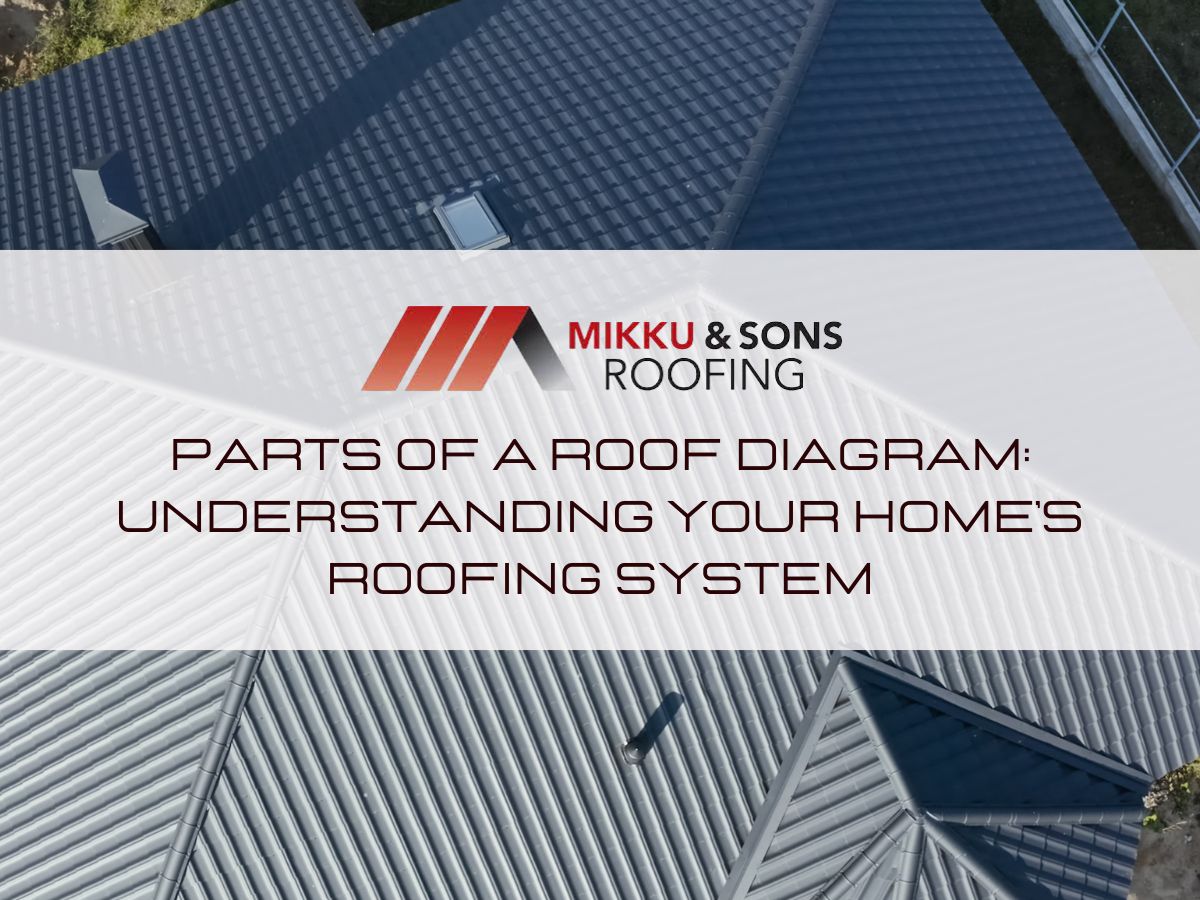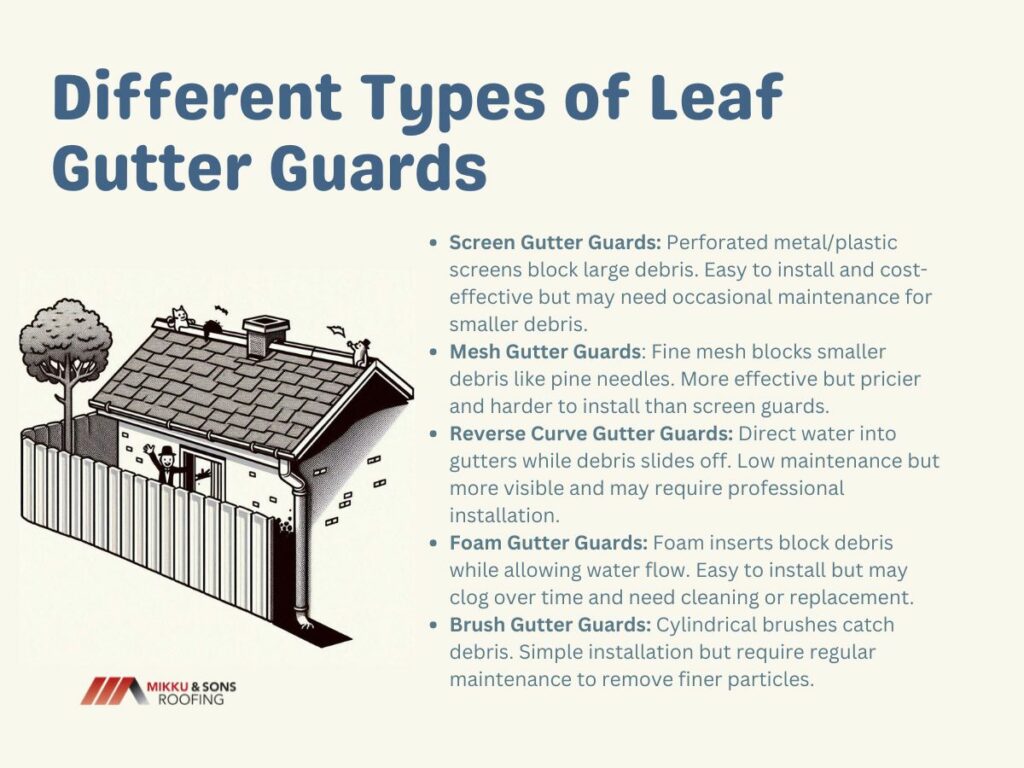

Maintaining your home's gutters might not be the most glamorous task, but it's one of the most crucial. As a homeowner, you're likely familiar with the tedious chore of clearing out leaves, twigs, and other debris that can accumulate in your gutters.
Not only is this job time-consuming and messy, but neglected gutters can lead to serious issues like water damage, foundation problems, and even pest infestations. That's where leaf gutter guards come in.
These innovative devices are designed to keep your gutters clear of debris, ensuring they function properly and reducing the need for frequent cleanings.
Leaf gutter guards are essential tools designed to keep your gutters free from debris, ensuring that rainwater flows smoothly and efficiently through your gutter system. These guards act as a barrier, preventing leaves, twigs, and other debris from clogging your gutters while still allowing water to pass through.
For homeowners, this means less frequent cleaning and reduced risk of damage to your home caused by blocked gutters. They are installed over or inside your gutters to block debris from entering while allowing water to flow through freely.
The primary goal is to maintain clear and functional gutters without the constant need for manual cleaning. These guards are particularly beneficial in areas with heavy foliage or frequent storms, where gutters can quickly become clogged.
Clogged gutters can lead to a host of problems for homeowners. When gutters are blocked, rainwater can overflow and seep into your home's foundation, causing structural damage and basement flooding.
Water spilling over the sides of clogged gutters can erode your landscaping, damage your exterior walls, and create ice dams in colder climates. Leaf gutter guards ensure that water is directed away from your home, preserving its structural integrity and aesthetic appeal.
When it comes to choosing the right leaf gutter guards for your home, it's essential to understand the different types available. Each type of gutter guard has its own unique design, advantages, and drawbacks, making it suitable for various environments and preferences.

Screen gutter guards are one of the most popular and widely used types. They consist of a perforated metal or plastic screen that fits over your gutters, blocking large debris like leaves and twigs while allowing water to flow through.
This type of gutter guard is relatively easy to install and can be an economical option for many homeowners. These guards are particularly effective in areas with large leaves but may require occasional maintenance to clear smaller debris that can accumulate on top of the screen.

Mesh gutter guards are similar to screen guards but feature a finer mesh material that can block even smaller debris. Mesh gutter guards are designed to fit over your gutters and can be attached securely to prevent them from being dislodged by wind or animals.
One of the main advantages of mesh gutter guards is their ability to keep out smaller debris like pine needles and shingle grit, which can be problematic for other types of guards. However, they may be more expensive and slightly more challenging to install compared to screen guards.
Reverse curve gutter guards, also known as surface tension guards, use a unique design to direct water into the gutter while allowing debris to slide off the edge. The design of reverse curve gutter guards ensures that leaves and other debris are pushed away from the gutter, reducing the need for frequent cleaning.
However, they can be more visible from the ground and may require professional installation to ensure they function correctly.

Foam gutter guards are a less conventional option that involves placing a foam insert inside the gutter. This foam blocks debris from entering while allowing water to flow through its porous structure.
Foam guards are relatively easy to install and can be cut to fit any gutter size. While foam gutter guards are effective at keeping out larger debris, they can become clogged over time with smaller particles and may require periodic cleaning or replacement.
Brush gutter guards consist of a cylindrical brush that sits inside the gutter. The bristles of the brush catch leaves and debris while allowing water to flow through. These guards are simple to install and can be easily removed for cleaning.
Brush gutter guards are effective for blocking large debris but may struggle with finer particles that can get caught in the bristles. They require regular maintenance to ensure they continue to function effectively, but their low cost and ease of use make them a viable option for many homeowners.
When selecting leaf gutter guards for your home, the material they're made from plays a crucial role in their effectiveness, durability, and cost. Different materials offer various benefits and drawbacks, so understanding these options can help you make an informed decision that best suits your needs and budget.
Plastic leaf gutter guards are a popular choice due to their affordability and ease of installation. These guards are typically made from high-density polyethylene (HDPE) or similar robust plastics.
Plastic guards are lightweight, which makes them easy to handle and install without professional help. They are also resistant to rust and corrosion, ensuring longevity in various weather conditions.
However, plastic gutter guards may not be as durable as metal options. They can become brittle over time, especially when exposed to extreme temperatures or prolonged sunlight.

Aluminum is a common material for leaf gutter guards because of its balance between cost, durability, and performance. Aluminum guards are lightweight yet strong, providing excellent resistance to rust and corrosion.
This makes them ideal for regions with high humidity or frequent rain. They can withstand harsh weather conditions without deteriorating.
However, they might dent or bend under heavy debris or pressure, so periodic inspection and maintenance are recommended.
Stainless steel gutter guards are known for their exceptional strength and durability. These guards are highly resistant to rust, corrosion, and impact, making them a long-lasting option for homeowners seeking minimal maintenance.
Stainless steel guards can handle heavy loads of debris and withstand harsh weather conditions without losing their effectiveness. They are less likely to need frequent replacements due to warping and damage, making them a cost-effective choice in the long run.
Copper gutter guards are the premium option, offering both durability and aesthetic appeal. Copper is naturally resistant to rust and corrosion, and it develops a patina over time that can enhance the look of your home.
Copper guards are incredibly durable and can last for decades with minimal maintenance. They are significantly more expensive and heavier than other materials, but their longevity and visual appeal can justify the investment for many homeowners.
There are several benefits to installing leaf gutter guards on your house, including time, cost, and bother savings. You will understand why gutter guards are a wise purchase for every homeowner if you concentrate on how these advantages directly affect you.

With leaf gutter guards, you no longer have to worry about your gutters getting clogged with leaves, twigs, and other debris. This means fewer hours spent on a ladder, scooping out muck, and more time enjoying your weekends.
Clear gutters ensure that rainwater flows smoothly, protecting your home from potential water damage.
Imagine cutting down the number of times you need to clean your gutters each year. Leaf gutter guards significantly reduce the frequency of gutter maintenance, freeing up your schedule for more enjoyable activities.
This reduction in upkeep not only saves you time but also reduces the risk of injury from climbing ladders.
Your home's foundation, walls, and roof are all protected when your gutters are functioning correctly. Leaf gutter guards help prevent water overflow that can lead to serious damage.
By keeping your gutters clear, you ensure that water is properly directed away from your home, preserving its structural integrity and avoiding costly repairs.
Leaf gutter guards act as a barrier against pests such as birds, rodents, and insects. Without guards, your gutters can become a haven for these unwelcome guests, leading to infestations and potential damage.
With guards in place, you create a more secure environment around your home, keeping pests at bay.
Efficient water flow through your gutters is essential to prevent overflow and pooling around your home. Leaf gutter guards help maintain this flow by preventing blockages.
This means you can rest easy during heavy rains, knowing that your gutters are doing their job and protecting your home from water damage.
By reducing the amount of debris that enters your gutters, leaf gutter guards help minimize wear and tear. This means your gutters will last longer, saving you money on replacements and repairs.
Investing in gutter guards now can lead to significant savings and fewer headaches down the road.
Potential buyers often look for homes that require less maintenance and have protective measures in place. By installing leaf gutter guards, you add a valuable feature to your home that can enhance its appeal and market value.
It's a small investment that can pay off significantly when it comes time to sell.
Choosing the right leaf gutter guards for your home is a crucial decision that can save you time, effort, and money in the long run. By understanding the different types and materials of gutter guards available, you can select the best option to suit your specific needs and preferences.
Understanding the common issues caused by gutters is essential for appreciating the value of leaf gutter guards. Gutters play a critical role in directing rainwater away from your home, but when they become clogged with leaves and debris, they can lead to severe problems.
Water overflow can damage your home's foundation, walls, and roof, leading to costly repairs. Additionally, clogged gutters can become a breeding ground for pests and insects, further complicating maintenance and posing health risks.
